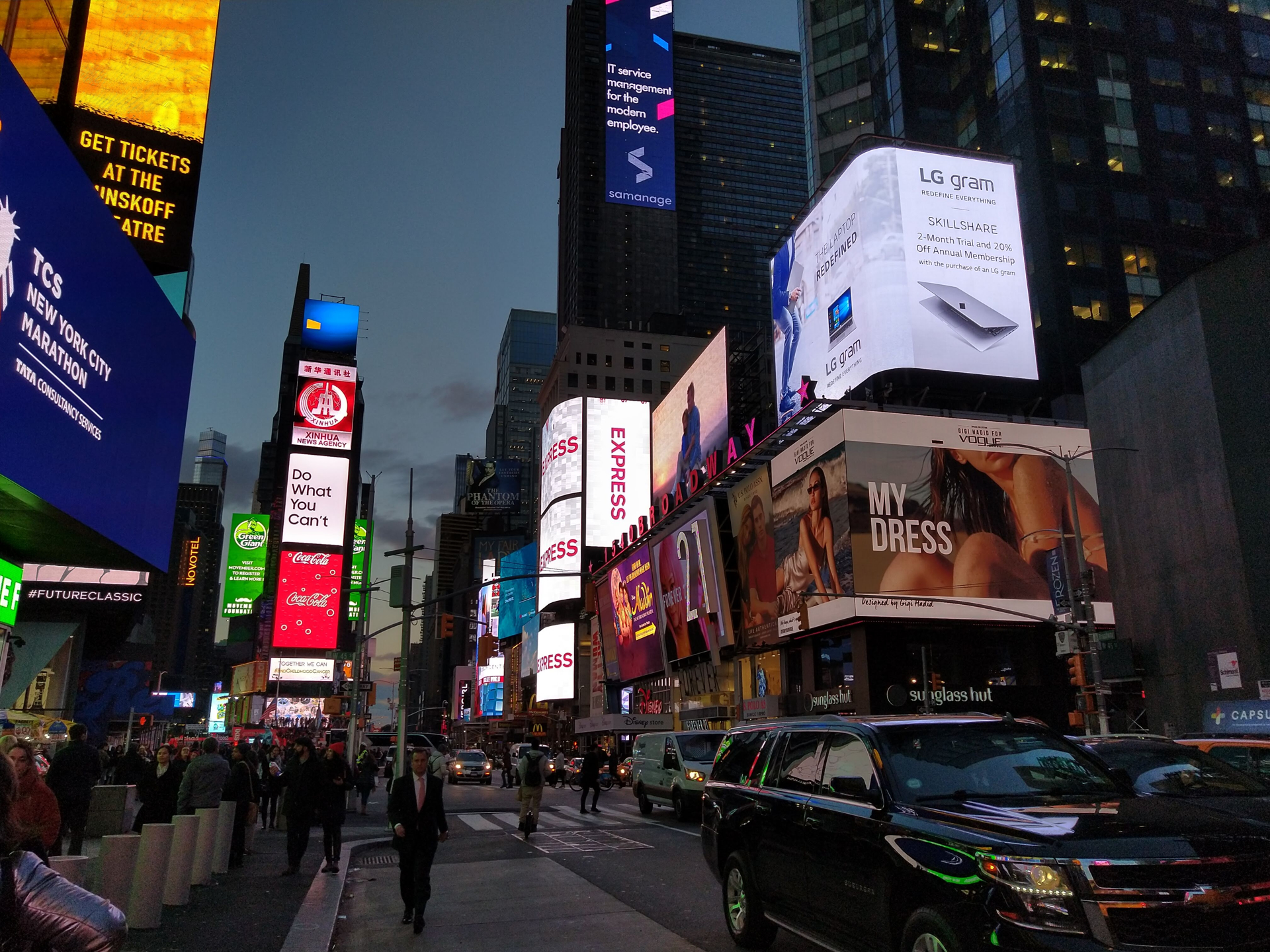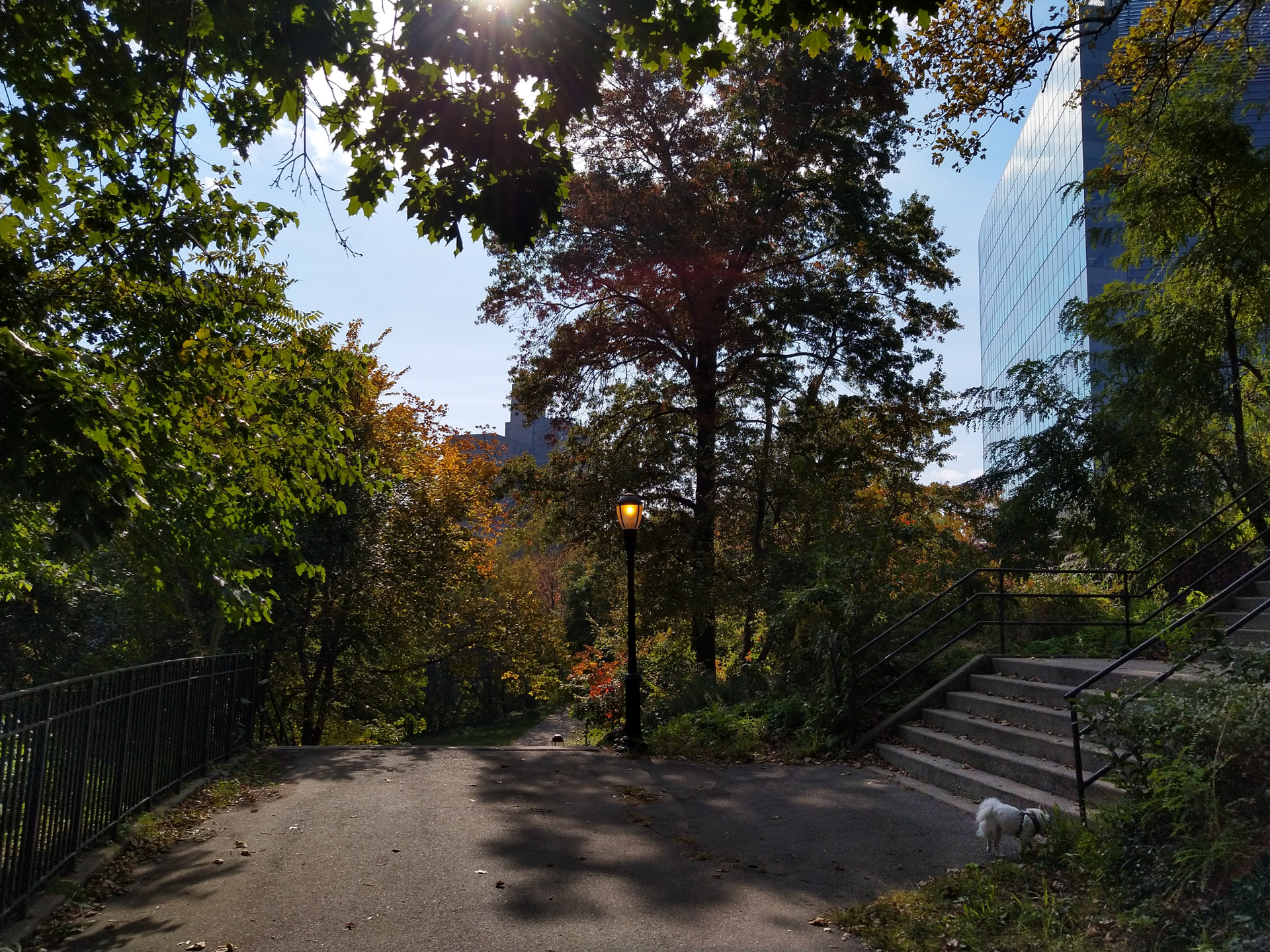“Close to perfect, the affordable Nokia 7.1 is everything you’ll want in a phone.”
- Solid performance
- Capable camera
- Great display
- Nice design, excellent build quality
- Affordable
- Doesn’t work on Sprint or Verizon
- Battery life could be better
- Performance can dip time to time
Move over, Motorola. There’s a new budget king in town. HMD Global, the company that licenses and creates Nokia smartphones, has slowly but surely been introducing unlocked smartphones in the U.S., and it’s on a roll. It brought the Nokia 6.1 earlier this year — which we consider to be the best smartphone under $300 — and the latest Nokia 7.1 is easily the best phone you can buy under $400. Motorola’s slew of budget phones have been dethroned.
The Nokia 7.1 looks and feels like a flagship smartphone, has a fantastic screen with HDR support, performs well, has Android One with a promise of fast updates, and packs a capable camera for the price tag. You can get a lot for $350 these days, but the Nokia 7.1 should be at the top of your list, because it’s close to the perfect budget phone.
Regal design, perfect size
The Nokia 7.1 exudes a kind of regality not often found in budget phones. It feels as though it costs much more than it does, and that’s largely thanks to the aluminum unibody that feels firm and brick-like, as though it can withstand numerous drops. The edges around the sides are flat, which helps with grip, and the glass on the back and front makes the phone look and feel like a 2018 flagship.
While the “toughened glass” back does a lot to further this phone’s aesthetics, there’s no utility, which means there’s no support for wireless charging and there’s a good chance it will crack after a few drops on a hard surface. We suggest buying a case.
We’re partial to the Gloss Steel color, but the Midnight Blue looks just as elegant. The back is simple, with a dual-camera module at the top (that sticks out a little), a sensibly-placed fingerprint sensor that’s quick to react, followed by a Nokia and an Android One logo below.
There’s also a Nokia logo on the front of the phone — two is a bit excessive. On the blue model, you’ll find silver trimmings around the edges on the front and back, and around the camera module. It adds a bit of flair to an otherwise plain phone, but the copper accents are better on the Gloss Steel.
There’s a headphone jack at the top (hear, hear), and a USB Type-C charging port at the bottom alongside a bottom-firing speaker. The power and volume buttons are on the right edge, and they are satisfyingly clicky.
The screen makes no compromises; Colors are punchy, there’s good contrast, and the screen is crisp.
Flip the phone around and you’ll be greeted with a notch (the cutout housing the selfie camera) at the top, and a sizable bottom bezel or “chin” with the second Nokia logo. This is one of HMD’s few phones with a notch design, and it looks good. The notch isn’t too big, and becomes less noticeable after you use the phone for some time. The bottom bezel is thicker than we’d like — it’s no Honor 8X – you’ll get used to it, too. Regardless, we’re happy to see the edge-to-edge design make its way to HMD’s budget phones.
The screen comes in at 5.84 inches, and we love the size. It’s similar to the iPhone XS, which we lauded for being the perfect size for a smartphone. It’s easy to reach all parts of the screen (your mileage may vary), and the 19:9 aspect ratio means it’s a very narrow phone, making it manageable to hold in one hand.
HMD hit the build quality and design of this phone out of the park with the Nokia 7.1. This is an affordable phone in the body of a flagship.
Excellent screen, loud audio
The Nokia 7.1 has an LCD screen (protected by Gorilla Glass 3) with a resolution of 2,280 x 1,080, and it’s one of the highlights of the phone. It’s colorful and sharp, though black levels aren’t deep. We haven’t had an issue with the screen’s brightness, as we’ve been able to see it well outdoors. It can also become dim when required, which is perfect for reading in bed at night.

HMD has somehow brought a flagship feature down to this $350 phone: Support for HDR10. That means you can enjoy wider color support and stronger contrast when watching HDR-supported content through apps like Netflix and YouTube. The screen also automatically converts any standard definition (SD) content into HDR. It’s not a dramatic difference, but it’s noticeable and it looks better than SD (you can turn this off if you don’t like it).
The screen makes no compromises. Colors are punchy, there’s good contrast, and the screen is crisp – This is a great phone for watching videos and movies.
The Nokia 7.1 easily performed all the tasks we expect from our flagship phones.
What about audio? There’s a single bottom-firing speaker, which is easy to block when holding the phone in landscape mode. Still, we’re impressed by how loud these speakers get, and surprised at the quality. It’s nothing like the stereo sound the Razer Phone 2 pumps out, but it sounds full-bodied and rich, though bass is weak. The headphone jack is always there when you want to plug in.
Solid performance, excellent Android One software
The Nokia 7.1 is powered by Qualcomm’s Snapdragon 636 processor, with 4GB of RAM, 64GB of internal storage, and a MicroSD card slot in case you need more space. A 3GB RAM and 32GB storage option is also available — just not in the U.S.

We’ve been using this phone for more than two weeks, and it easily performed all the tasks we expect from our flagship phones. It zipped through the Android operating system and ran all our favorite apps. We did notice an occasional hiccup, though, and the phone can slow down a little when you juggle multiple tasks at the same time.
Most games run well on this phone, but you may have issues with titles that are graphics-heavy. We played Alto’s Odyssey and Tekken, and while both performed admirably, there were moments when they stuttered a little — especially when notifications came through.
The AnTuTu score is well ahead of budget competitors like the Moto G6 Plus (90,483), Moto G6 (70,827), and it even bests the pricier Moto Z3 Play (110,949).
Or benchmark results for the Nokia 7.1:
- AnTuTu 3D Bench: 115,453
- Geekbench 4 CPU: 1,345 single-core; 4,773 multi-core
- 3DMark Sling Shot Extreme: 747 (Vulkan)
We’re happy with the Nokia 7.1’s performance. Its satisfactory day-to-day capabilities make it perfect for the average person.
The Nokia 7.1 runs Android One, a version of Android straight from Google without any bloatware. It’s uncluttered, simple to use, and moving throughout the OS is quite speedy. It’s running Android 8.1 Oreo at the moment, but HMD said the phone will receive an update to Android 9 Pie by the end of November.
That’s the other benefit of Android One. There’s a promise of fast version updates for two years, and security updates for three years. That helps keep your phone up to date and secure, which is rare for phones in this price range.
Capable camera
Budget phones often falter when asked to snap photos. The Nokia 7.1 proves otherwise, and while low-light performance isn’t its strong suite, it’s capable enough. It has two lenses on the back, both with Zeiss optics. The primary is a 12-megapixels lens with a f/1.8 aperture, and it’s paired with a 5-megapixel lens for depth sensing.
The camera is quick to launch, though there’s a small delay when snapping pictures. You must be very still to keep a image in focus, otherwise you’ll end up with a blurry shot. Photos in general deliver accurate colors, and daylight shots are surprisingly detailed. There’s good HDR for most situations, though the sky can sometimes look blown out.
In low-light environments, details quickly deteriorate, but colors are solid, and photos don’t look too noisy. The camera does have trouble focusing in dark conditions.
Now we need to talk about the phone’s biggest weakness. Battery life.
Portrait Mode is available on the back camera, as well as the front 8-megapixel selfie camera. Again, you need to stay still to make sure the photo isn’t blurry, but results are solid. The cameras do a great job of identifying the edges of a subject, struggling only slightly with hair.
The camera has an easy-to-use Pro mode that lets you adjust settings, and HMD’s “Bothie” mode is available, which lets you snap a photo with the rear and front camera at the same time. It’s a fun feature that lets you stay in the shot while capturing the action.
Overall, this is easily among the best cameras you’ll find in a smartphone of this price. Optical image stabilization would improve the experience, but we’re quite satisfied with the photographs the 7.1 produces.
Almost a full day of battery
So far, so good, but now we must talk about the phone’s biggest weakness. Battery life.
The Nokia 7.1 has consistently surprised us.
On most days (with medium to light use), we were able to squeeze out a full day of use out of the 3,060mAh battery, with around 30 percent remaining by 6 p.m. That’s an average of 3.5 hours of screen-on time.
But on more demanding days, with gaming, photos, music and video streaming, and a lot of instant messaging, the phone came close to dying around by 4 or 5 p.m. — if we wanted to stay out late, we had to plug it into an external battery pack to make sure it lasted the night. That happened on two occasions.
Luckily, the phone charges quickly. HMD says it can hit 50 percent with just 30 minutes of charging, and that’s the speed we saw in tests. We plugged in the phone at 18 percent, and it hit 60 percent in just 30 minutes with the included charger.
Despite having a glass back, there’s no wireless charging. While it may be too much to ask for a $350 phone, it would’ve been a nice touch.
Price, availability, and warranty information
The Nokia 7.1 is $350, and it’s available from Amazon, Best Buy, and B&H in the U.S. You should know this phone only works on AT&T and T-Mobile, so if you’re on Verizon or Sprint, you’re out of luck.
HMD Global offers a standard one-year warranty on the Nokia 7.1 from the date of purchase, which protects the device from manufacturer defects.
Our Take
The Nokia 7.1 has consistently surprised us with its capabilities at its $350 price tag. There are compromises, yes, but It has everything you’d want in a phone: Uncluttered software, satisfactory performance, a capable camera, an affordable price tag, and a great screen with good sound. If you don’t want to spend much on a phone and you’re on AT&T or T-Mobile, the Nokia 7.1 is the phone to buy.
Is there a better alternative?
There are plenty of phones to consider if you want to spend less than $350, but at this price, the Nokia 7.1 is your best bet in the U.S. The Nokia 6.1 is a good alternative at $270, with decent performance, an acceptable camera, and good build quality. The Moto G6 should also be considered, though we think the 6.1 is the better choice.
There’s the Motorola One for $400, which also runs Android One, but it won’t match the Nokia 7.1’s performance. You can’t go wrong with the Nokia 7.1 for its $350 price.
How long will it last?
The Nokia 7.1 is an Android One phone, so you should see security updates for three years, and at least two Android version upgrades. Android 9 Pie will land at the end of November, making this one of the few budget phones (excluding other HMD phones) with the latest version of Android.
We think it should last you a solid two — maybe three — years before you’ll need to upgrade. The battery will start to wear out by then.
Should you buy it?
Absolutely. This is the best phone you can buy under $400.

























